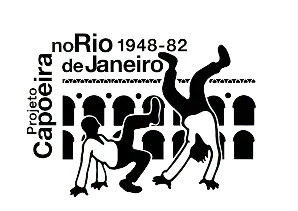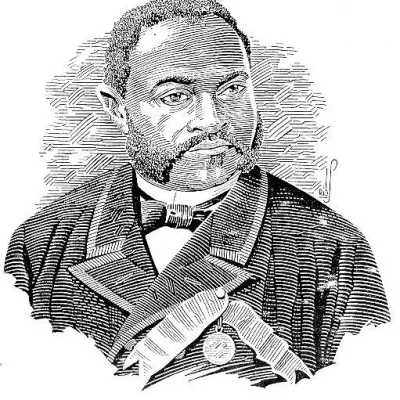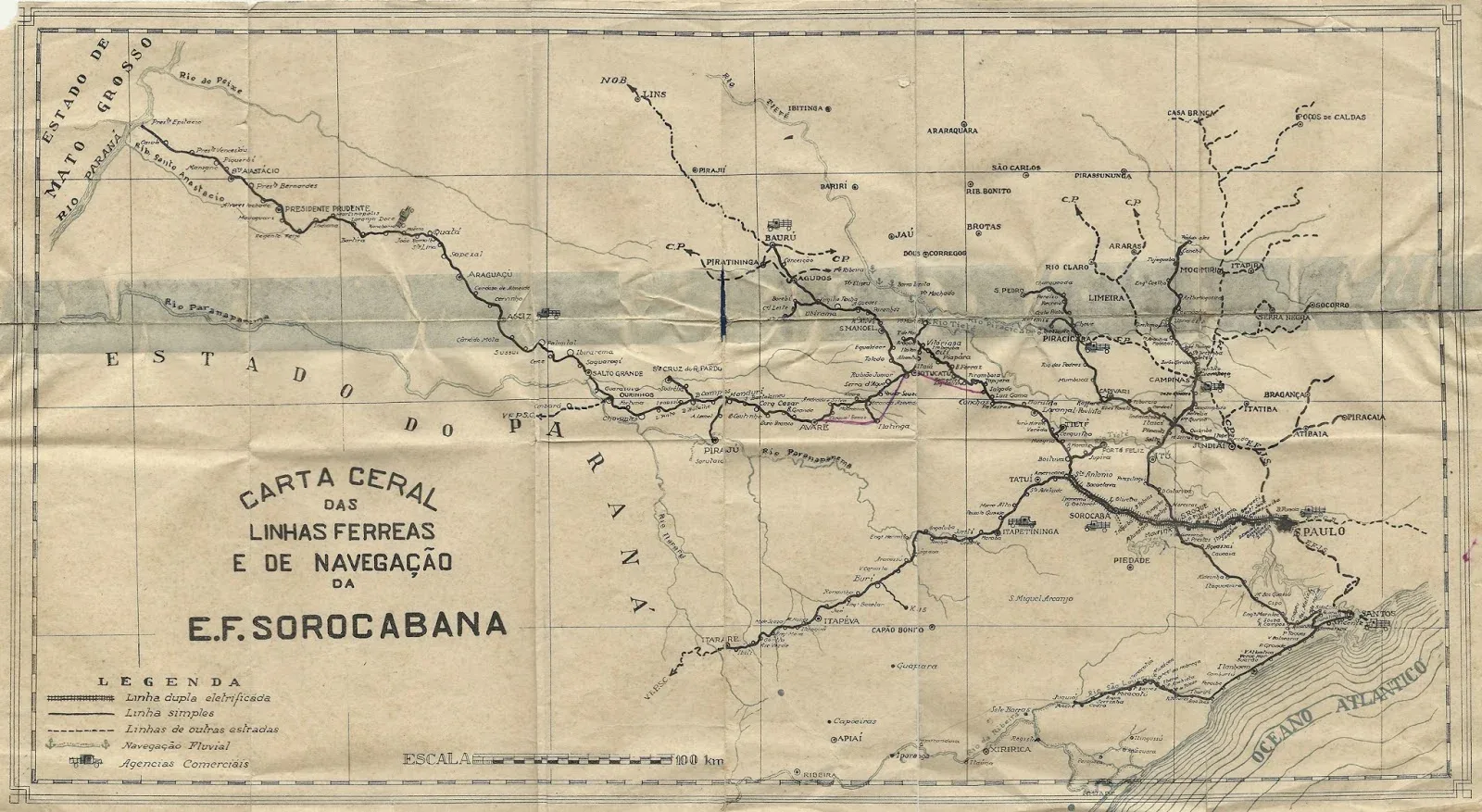By Pedro Cunha.
When we think of the historical process by which capoeira developed, we often overlook the rich exchanges that took place among people of different backgrounds and experiences in Brazil during the period before the Angola and Regional lineages were consolidated. In the research for my MA, “Capoeiras e valentões na História de São Paulo” (CUNHA, 2011), some interesting instances of capoeira practice are registered, involving men from every corner of Brazil and even from abroad. This paper discusses some of these cases, highlighting the diaspora of capoeiras from Rio de Janeiro to São Paulo after the Proclamation of the Republic on November 15, 1889, when Police Chief João Batista Sampaio Ferraz began a violent persecution of practitioners of the fighting game.
According to Soares, the “Steel goatee beard”, as Sampaio Ferraz came to be called, immediately after being appointed began arbitrarily arresting and deporting capoeiras to Fernando de Noronha, without the backing of any judicial measure. On January 3, 1890, a war steamer set sail for the remote island, carrying 154 capoeiras, including well-known jackknife fighters and gang leaders. (SOARES, 1999, p. 264) The situation of capoeiras in the city of Rio de Janeiro became even worse with the approval, on October 11, 1890, of the Republic’s new Criminal Code, which criminalised capoeira by means of Book III, chapter XIII, “Of Vagrants and Capoeira”, article 402.
This direct persecution of capoeiras in Rio de Janeiro occurred also in other regions, where electoral henchmen likewise annoyed Republican politicians. In Pará, for example, a hunt for capoeiras associated with conservative groups began even before approval of the 1890 Penal Code, and many “tough guys” were deported to Amapá (LEAL, 2008, pp. 105-123). In São Paulo State, however, the persecution of capoeiras that began in the Federal District (Rio de Janeiro) and was institutionalised by the Penal Code apparently had a different impact, due to the specific political context in each of the main Brazilian cities.
Many black leaders of the abolitionist movement in São Paulo were staunch republicans, such as Quintino de Lacerda, a native of Itabaiana in the state of Sergipe who, after being brought to the city of Santos in 1874 while still a enslaved, was freed in 1880 by the republicans Antonio and Joaquim Lacerda Franco, and chosen to head the Jabaquara Quilombo (LANNA, 1996, p. 193). This maroon stronghold was organised in 1882 by part of the São Paulo elite supporting the end of slavery. The quilombo would have welcomed between two and twenty thousand people according to different sources and periods. There is no clear record whether Lacerda was a capoeira or not, but in a one source we find that Jabaquara had brave men and women like “Manoel Leocádio, a tough native, fearless capoeira and with a batuque that you can only believe it exists if you see it”, and his wife Maria Theresa, who went with the leader of the quilombo to the Casqueiro bridge, in Cubatão, in 1889, to fight in favour of Floriano Peixoto [Republican general] (A Tribuna, 26/01/1939).
In addition to the political context, it is possible that the lack of manpower to deal with the growing number of capoeiras in São Paulo contributed to police chief Bernardino de Campos’ uncertainty about how to deal with them. After receiving letters on how to proceed with the arrest of capoeiras, sent by delegados [local police officers] from different locations in the early 1890s, such as Ribeirão Preto, Santos and Santa Rita do Passa Quatro, (AESP, Police, letters of 02/02/1890, 20/02/1890 and 25/02/1890) Bernardino de Campos consulted the State Governor, Prudente José de Moraes Barros, about an occurrence in São João do Rio Claro, in August 1890, involving a “capoeira, gambler, troublemaker and vagabond” named João Antonio dos Santos, “known as Bambú, ex-soldier of the 7th infantry battalion”. When asked what destination he should give the individual, the governor only authorised the capoeira to be sent to the Minister of Justice, without giving further guidance on how this type of problem should be solved. (AESP, Police, letter of 25/08/1890).
Cariocan diaspora
Curiously or not, the first letter from a delegado to the São Paulo Chief of Police, referring to problems caused by capoeiras from Rio de Janeiro, originated in the city of Itu, where, in 1858, a municipal ordinance was passed imposing penalties on “any person who, in the squares, streets, public houses or any public place, practices or exercises the game called capoeiras. (AH-ALESP, register CP58-018, p. 6) It was also in this city that the great persecutor of capoeiragem, Sampaio Ferraz, did his preparatory studies in 1878 to enter São Paulo’s Law School (MELO, 1954, p. 213).
On February 1, 1890, the delegado of Itu wrote to the chief of police of São Paulo, requesting guidance on how to proceed in the presence of a man who claimed to be Italian and who had hit a child’s left arm with a jack knife, his “inseparable companion”. For the authority, the bully “was part of a gang of capoeiras that recently infested the city of Rio de Janeiro, and who, persecuted by the police of that city, came to these parts to hide from that persecution”. This was because he “came from Rio de Janeiro a few days ago, and, being experienced in capoeiragem, made it known that he was not unfamiliar with the trade!” In view of this, the capoeira was sent to the Chief of Police, to be dealt with as he saw fit. What must have been the Itu authority’s surprise when he received the reply, written in pencil at the top of the letter he had sent, that, since the capoeira was “subject to conscription to the Army and Navy, the sending of the individual was irregular” and that “if he is a vagrant and a troublemaker”, the delegado should simply use the legislation in force against such contraventions. In other words, the fact that he was a skilful capoeira with a jack knife mattered little. (AESP, Police, letter of 01/02/1890).
In a letter dated 01/02/1890, the Itu delegado Joaquim de Vasconcellos sent the São Paulo police chief, Bernardino de Campos, an individual of Italian origin who was said to be one of the capoeiras fleeing persecution in Rio de Janeiro. At the top, one can read the reply that “if he is a vagrant and a troublemaker, he should use against [the arrested] the resources” that deal with these crimes, referring to the articles of legislation handling such misdemeanours.
The same can be deduced from another letter, dated May 10, 1890, from Sorocaba, where a local code of ordinances was also passed restricting capoeira (AH-ALESP, Câmaras municipais, cadastro CP50-017, p. 47), in the middle of the 19th century. In the document, the delegado says that he transferred as a matter of urgency Ricardo Florencio, Spanish, single, 30 years old or so, for being a “real vagabond”, with no fixed address, and that he was arrested three times in a row for theft, “being once in Santos and twice in this city”. According to the authority, this individual was “a real thief, and one of the capoeiras fugitives from the Federal Capital”, which led him to send him to the Chief of Police. Shortly thereafter, he received a surprising reply, stating that the capoeira had been set free, “since the prisoner is not subject to any proceedings here,” and recommended that the delegado “not continue to send individuals to this capital under the conditions he came, since the police headquarters have no means of obtaining them beyond those established in the criminal laws which are the responsibility of this police station. (AESP, Police, letter of 10/05/1890)
These examples make a few points clear. First, the chief of police had little concern for capoeiras, or at least lacked resources to conduct a systematic persecution along the lines of that which had occurred in Rio de Janeiro. Second, there was a strong presence of immigrants among Rio de Janeiro’s capoeira practitioners, something already established by scholars such as Carlos Eugênio Soares and Antônio Liberac Pires.
One possibility for the arrival of capoeiras from Rio de Janeiro to São Paulo would be linked to the railway tracks that connected the capital of the Republic to the interior of São Paulo. According to folklorist Alceu Maynard Araújo, “when Botucatu was still the terminus of the Sorocabana railway, some waves of capoeiras were disembarked there from Rio de Janeiro”. About this case, he adds that the capoeiras “adjusted themselves neatly to the industrious Botucatu people” and in 1927, “when the Athletic Bloco Pedotríbico Orfeu was created,” a famous carioca capoeira named Menê “started a group of students in this sport, losing his rustiness to teach the rasteiras, rabo-de-arraia [capoeira movements], etc.” (ARAÚJO, 1964, p. 314).
Another point to be highlighted on this subject is that men from the most diverse origins and social classes would have found themselves in this situation. The arrival of capoeira practitioners from Rio de Janeiro’s high society contributed to breaking a long silence of São Paulo’s intellectuals on the subject of the capoeira. In the book Gente rica, José Agudo – pseudonym of José da Costa Sampaio – describes a meeting between distinguished men from São Paulo, whose intention was to form a mutual society to institute a “pension for those who have contributed for 20 years”. Among these illustrious men was Jeronymo de Magalhães, who “had appeared in São Paulo when Dr. Sampaio Ferraz held the post of chief of police in the Federal Capital”. According to the author, Jeronymo “was one of the capoeiras who escaped from the pursuit of that energetic official”. (AGUDO, 1912, p. 78).
The apparent protection afforded capoeiras in São Paulo territory, however, did not mean absolute freedom of action. São Paulo was moving towards modernity and could not accept “barbaric behaviour”. In practice, São Paulo began a process of social exclusion of former slaves. Petrônio José Domingues points out in his study on blacks and labour in the post-abolition period in São Paulo how “racism in the São Paulo way was resourceful as to the exclusion of blacks from the job market,” at times pointing to ” vagrancy”, at other times identifying the “professional unpreparedness of the black population as the causes of their poverty and marginalization”. (DOMINGUES, 2000, p. 78) Among other examples, he cites an article published in the magazine O Kosmos, on October 19, 1924, about Bernardo Vianna, a black man from Rio de Janeiro who was shocked to see what was happening to blacks in São Paulo, stating that jobs could not be found “due to a ‘mute and odious war’ that blacks suffer in São Paulo and cities in the interior of the state”. (DOMINGUES, 2000, p. 81)
An understanding of the difficulties black workers had in entering the formal labour market in São Paulo at the beginning of the 20th century is essential to an understanding of the transformation capoeira underwent, like other slave-based cultural forms, in the post-abolition period. Unable to find formal employment, men of colour used every tool at their disposal, including martial skills, to survive in black strongholds such as Morro do Piolho, in the city of São Paulo.
One reference to the presence of capoeiras and tough guys in this location is a photograph reproduced in the book Retratos da velha São Paulo (SESSO JÚNIOR, 1983), which bears the following caption: “a view of the old Espírita Street with the Lavapés corner. In the background, the famous ‘Morro do Piolho’, [‘Lice Hill’] a place where the ‘capoeiras’, the scoundrels and bullies of the Cambuci neighbourhood used to gather in the past. Photo from 1904”. What is striking about the photo, reproduced below, is the presence of a man, apparently black and dressed as a malandro [rogue], in a black suit and hat hanging to the side, leaning against a post and surrounded by boys.
It is also worth mentioning that these “capoeiras, rogues and bullies” may have served as inspiration for one of the most famous characters played by Adoniran Barbosa on the radio, who was part of the programme Histórias das Malocas (1956): Charutinho, “the unsuccessful and idle rascal from Morro do Piolho”. The success of Charutinho led Adoniran to compose, in 1959, the song “No morro do piolho”, based on the programme and its characters. (SESSO JÚNIOR, 1983, p. 190).
Conclusion
The influence of capoeiristas from Bahia, such as mestres Ananias, Evaristo, Zé de Freitas, Suassuna, Brasília, Joel and others, on the making of modern capoeira in São Paulo in the second half of the 20th century is undeniable. It was they who planted the seeds of much more ritualised styles of capoeira, Angola and Regional, both played to the sound of an instrument which had already been lost in São Paulo’s traditions, the berimbau. They brought new movements, their own teaching methods, mandingas, malícias and typical Bahian songs.
However, it was not a one-way experience. Our research indicates that this seed sprouted and grew strongly in São Paulo because it found fertile soil there, nurtured by more than a century of bravery, bodily prowess, chants of defiance and sounds that had the same origins as capoeira in Bahia: slavery. More than that, São Paulo had a tradition built up by people from the most diverse regions of Brazil and even from abroad. Throughout our research, we came across capoeiras from Africa, Bahia, Sergipe, Maranhão, Rio de Janeiro and many other regions.
In the case of the Cariocas, specifically, we know they had been present in São Paulo since at least 1831, when a group of 50 or 60 captives from São Paulo capital, identified as capoeiras, armed with sticks and knives, and whose leaders wore red barrettes, surrounded a farm in Brás to “show the Carioca Negroes the impunity of the São Paulo Negroes,” all of whom were Africans. (AESP, Ofícios Diversos da Capital, Doc. 98A, 1831)
We also have reports that other capoeiras continued to land in São Paulo during the first half of the 20th century, including José Francisco dos Santos, the famous Madame Satã, who spent two moments in São Paulo, in 1930 and 1946. (DURST, 2005, pp. 27 and 45).
We hope this text will contribute to further research on the diaspora of capoeira practitioners from Rio de Janeiro into São Paulo and other regions after the Proclamation of the Republic and the subsequent criminalisation of their practice, with the understanding that their journeys and returns may have resulted in a “process of horizontal circulation and reciprocal borrowing” of gestures, verses, rituals and traditions, as pointed out by Matthias Assunção regarding the exchanges between different forms of slave culture in Brazil (ASSUNÇÃO, 2005, p. 69).
Pedro Cunha is the author of the book Capoeiras e Valentões na História de São Paulo (Alameda, 2015). Graduated in Social Communication (UNISANTOS), with a Masters in Social History (USP). Currently, he works as Content and Innovation coordinator at Fundação Iochpe.
References and Bibliography:
AGUDO, José. Gente rica: scenas da vida paulistana. São Paulo: Ed. O Pensamento, 1912.
ARAÚJO, Alceu Maynard. Folclore nacional (volume II): danças, recreação, música. São Paulo: Melhoramentos, 1964.
ASSUNÇÃO, Matthias Röhrig. Capoeira: the History of an Afro-brazilian Martial Art. Londres: Routledge, 2005.
BRETAS, Marcos Luiz. A queda do império da navalha e da rasteira (a República e os capoeiras). Cadernos de Estudos Afro-Asiáticos Nº 20, Cândido Mendes, 1991.
CUNHA, Pedro Figueiredo Alves da. Capoeiras e valentões na história de São Paulo (1830-1930). 2011. Dissertação (Mestrado em História Social) – Faculdade de Filosofia, Letras e Ciências Humanas, Universidade de São Paulo, São Paulo, 2011. Disponível em: https://www.teses.usp.br/teses/disponiveis/8/8138/tde-11092012-105013/publico/2011_PedroFigueireidoAlvesdaCunha_VCorr.pdf. Acesso em: 20 fev. 2021.
DOMINGUES, Petrônio José. Uma história não contada: negro, racismo e trabalho no pós-abolição em São Paulo (1889-1930). São Paulo, 2000. Dissertação (Mestrado em História Social) – USP.
DURST, Rogério. Madame Satã: com o diabo no corpo. São Paulo: Brasiliense, 2005.
LANNA, Ana Lúcia Duarte. Uma cidade na transição. Santos, 1870-1913. Santos: Editora Hucitec/Prefeitura, 1996.
LEAL, Luiz Augusto Pinheiro. A política da capoeiragem: a história social da capoeira e do boi-bumbá no Pará republicano (1888-1906). Salvador: Edufba, 2008.
MELO, Luís Correia de. Dicionário de autores paulistas. São Paulo: Comissão do IV Centenário da Cidade de São Paulo, 1954.
PIRES, Antônio Liberac Cardoso Simões. A capoeira no jogo das cores: criminalidade, cultura e racismo na cidade do Rio de Janeiro (1890-1937). Campinas, 1996. Dissertação (Mestrado em História) – Unicamp.
SESSO JÚNIOR, Geraldo. Retratos da velha São Paulo. São Paulo: Gráfica Municipal de São Paulo, 1983.
SOARES, Carlos Eugênio Líbano. A negregada instituição: os capoeiras no Rio de Janeiro. Rio de Janeiro: Access Editora, 1999.
Primary sources:
A TRIBUNA de Santos. 110 annos de vida – um escrínio de recordações. Edição commemorativa do 1º Centenário da Cidade de Santos (1839-1939), 26/01/1939.
ARQUIVO do Estado de São Paulo (AESP). Polícia (1890). Caixa 286, Ordem 2721, ofícios de 01/02/1890 (Itu), 02/02/1890 (Ribeirão Preto), 20/02/1890 (Santos), 25/02/1890 (Santa Rita do Passa Quatro) e 10/05/1890 (Sorocaba).
ARQUIVO do Estado de São Paulo (AESP). Polícia (1890). Caixa 290, Ordem 2725, ofício de 25/08/1890 (São João do Rio Claro).
ARQUIVO do Estado de São Paulo (AESP). Ofícios Diversos da Capital (1831), Caixa 72, Ordem 867, Pasta 1, Doc. 98a.
ACERVO Histórico da Assembleia Legislativa do Estado de São Paulo (AC-ALESP). Câmaras municipais, Caixa 274, cadastro CP50-017.
AH-ALESP. Câmaras municipais. Caixa 282, cadastro CP58-018.








